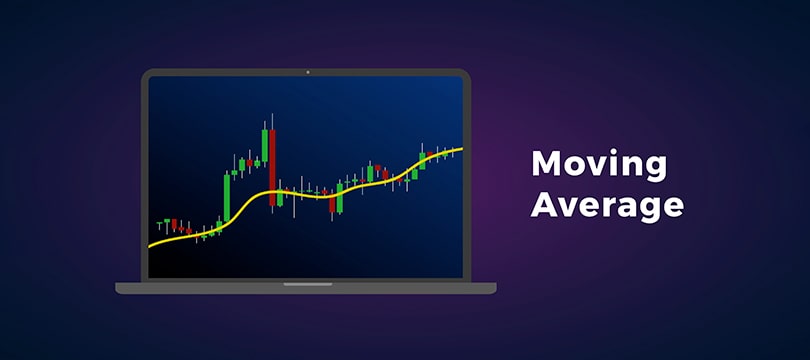Simple, Weighted, and Exponential Moving Averages: A Trader's Guide
April 1, 2024

The world of financial trading is rich with tools and techniques useful for interpreting market movements. Among these, moving averages stand out. These are among the most widely used and appreciated technical indicators, thanks to their ability to filter out market "noise," offering a clearer view of price direction.
In this article, we will provide a definition of moving averages, discuss the various types, and how they can be used by traders, even those who are approaching this world for the first time.
What are moving averages
A moving average is a technical indicator used to analyze price movements of financial instruments (such as stocks, bonds, commodities) by ignoring short-term price fluctuations and highlighting the direction of a trend.
The concept behind moving averages is simple: the arithmetic mean of closing prices (or opening, highs, lows) of a security is calculated for a specific period, and as time progresses, the calculation is updated to include the most recent data and exclude the older data.
Moving averages are valuable tools for traders because they offer an intuitive visual representation of the market's underlying trend, helping them distinguish between genuine price movements and temporary fluctuations. Thanks to this information, traders can make more rational decisions, whether they are trying to capture an emerging trend or seeking to identify the right moment to exit a position.
Types of moving averages
Moving averages differ primarily in the way data is weighted or prices are calculated. In this way, they are divided into three main variants: simple (SMA), weighted (WMA), and exponential (EMA).
Simple Moving Average (SMA)
The Simple Moving Average (SMA) is the most basic type of moving average. It is calculated by summing the closing prices of a security over a certain number of time periods and then dividing this total by the number of periods. The SMA provides a uniform view of price movement, but it can be slow to react to new trends due to its evenly weighted nature.
Weighted Moving Average (WMA)
The Weighted Moving Average (WMA) assigns greater weight to more recent data. This means that more recent prices have a greater influence on the average, making the WMA more sensitive to short-term price variations compared to the SMA. This characteristic makes it particularly useful for traders seeking to capture early signals of a trend change.
Exponential Moving Average (EMA)
The Exponential Moving Average (EMA) represents an evolution of the WMA. In fact, it applies exponential weighting to the data. This method attributes even more importance to recent prices, thus reacting more quickly to market variations compared to both the SMA and WMA.
The EMA is preferred by many professional traders because it manages to combine sensitivity to short-term price movements with the ability to remain aligned with long-term trends.
How to use moving averages
Moving averages can be used in various ways, depending on the objectives and trading style. Here are some of the most common applications.
Trend Identification
The simplest way to use moving averages is to identify the direction of the trend. A price moving above its moving average is generally interpreted as a bullish signal, while a price falling below its moving average is seen as a bearish signal.
Support and Resistance
Moving averages can also act as support and resistance levels. During an uptrend, a moving average can act as a support level at which the price tends to bounce upward; in a downtrend, it can act as resistance, repelling attempts at price rallies.
Trading Signals
Traders often use moving averages in combination with each other to generate trading signals. For example, when a short-term moving average crosses above a long-term moving average (bullish crossover), a buy signal can be derived. Conversely, a bearish crossover can be seen as a sell signal.
Moving averages are powerful and flexible tools that can enrich any trader's arsenal. Whether identifying trends, establishing support and resistance levels, or generating trading signals, moving averages offer a range of applications that can help traders navigate financial markets with greater confidence.
However, as with any technical analysis tool, it is crucial to use them in combination with other techniques and indicators to validate signals and improve the reliability of one's trading decisions.
Human 30%; AI 70%




